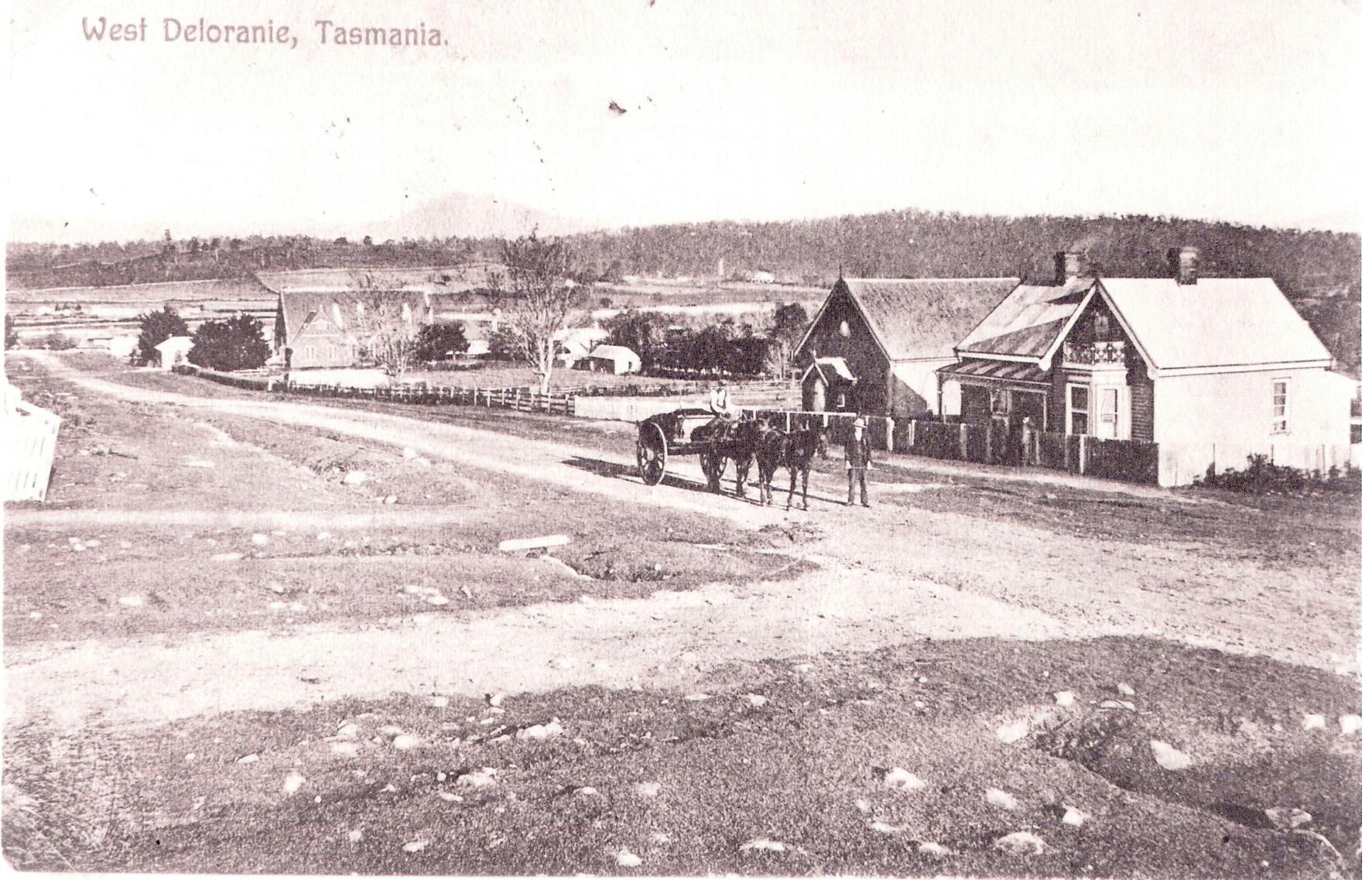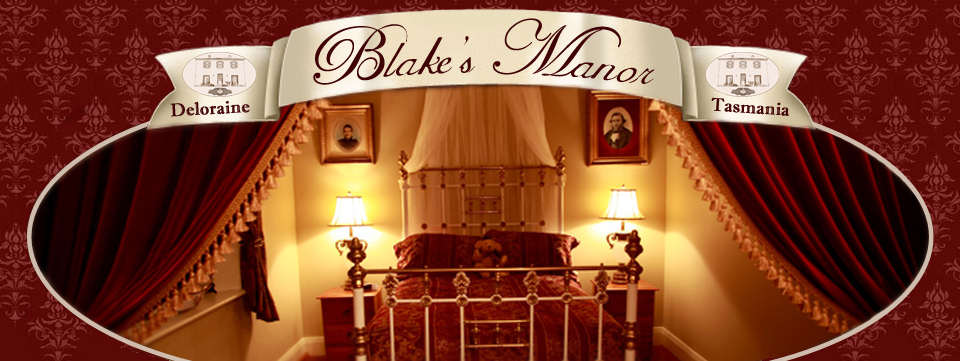HISTORY







Relive the history of Blakes Manor
In 1823 Govenor Sorell sent Captain Roland to explore the far West Norfolk Plains and districts west for agricultural land. As a result of this expedition, Mount Roland (near Sheffield) and the Meander River were named (formerly Western River). The township of Deloraine, named by Surveyor Scott, was established on the Meander River. The township flourished and in the early 1870’s the first rail link in Tasmania was established between Launceston and Deloraine. The railway greatly reduced the poor transport problems further opening up the area. Buildings dating from the 1830’s and 1840’s are still in use today as private dwellings and commercial entities such as galleries.
The beautiful and majestic Blakes Manor is a grand example of Georgian architecture and proudly boasts being one of the earliest Inns in Deloraine. The original farmhouse was first believed to be built in the late 1830’s by an ex-convict named Timothy Gannon who eventually sold the property to an entrepreneurial hotelier named Martin Blake in 1857. (Copies of the original sale deed can be viewed in your Heritage Suite, at the Manor).
Blake prospered with his popular hotel and due to his new found wealth, was able to build the large Manor House in the late 1850’s which still stands as a landmark in the town to this day. Toward the end of the nineteenth century the Manor House and hotel building were sold to Reverend Murphy and the Catholic Church (opposite) used it as a home for the Sisters of Mercy Order and as a boarding house for children attending the local Catholic School.
Older residents of Deloraine still reminisce about the “old convent” and many can recount their stays at the Convent as boarders of the school, while living as farmers in the beautiful rural areas surrounding Deloraine.
Much restoration and care over the years have brought Blakes Manor back to its former glory and once again it opens its doors to the public as a chance to step back in time to an era of romance and luxury.
On our doorstep, Historic Deloraine…
In the Apex Train Parka cross from Bonney’s Inn is the E Class No. 2 Locomotive, which commemorates the opening of the Launceston to Deloraine Railway on 10 February, 1871.
On the opposite side of the Meander River is the building which housed Deloraine’s first electric power station. It began operating in 1907.
The trees near the bridge were planted at the turn of the Century and are outstanding examples of their species.
The original village of Alveston on the Launceston side of the Meander River along the Bass Highway. It was not part of the official town area, but developed earlier than Deloraine.
The Bush Inn (Bass Highway) was built in 1848 by John Thomas.
On the left hand side of the road are the Alveston Cottages, built in the early 1840’s. A little further on, on the right is a private residence, which for many years operated as the Plough Inn. It was built in 1841 by Frederick Rudge and opened as an Inn in 1848, being Alveston’s first hotel.
On the hill you can see St. Mark’s Church (East Westbury Place). The original Anglican Church was a small wooden building, opened in January 1847. The foundation stone for the present Church was laid in 1856 and the building opened in 1859. It consisted of the nave, the tower and the spire and a small chancel. St. Mark’s acquired a pipe organ in September 1860 from London. The stained glass window was added in 1909 to commemorate the Church’s Golden Jubilee. Many pioneer settlers of the district are buried in the church yard.
Back across the bridge further down West Parade is the Baptist Tabernacle built as a result of the generosity of William Gibson, a wealthy grazier from Perth, Tasmania. It was opened on 26 December, 1880.
Further along past the weir is a building known as Harvey’s Mill which was build in the 1850’s by Samuel Shorey. It is built of bluestone and bricks with two feet (60cm) thick walls and one foot (30cm) square pitsaw wooden supports. The one tone millstones were originally driven by a steam engine and later by a Crossley kerosene engine. The mill, which produced flour, oatmeal and rolled oats, is now a private residence.
Above the mill building is St. Iveys – the residence of Samuel Storey and built at the same time as the mill. The bluestone for both buildings was quarried from behind the house. St. Ives has two feet, six inches (75cm) thick walls. It is now a private residence.
Other Historical Buildings in Deloraine
Claytons Mil -, Beefeater Street
Eldersyde - Tower Hill Street, between West Church and West Barrack St.
Tower Hill Street Cottages - Opposite Eldersyde
British Hotel -, Emu Bay Road
Early Cottages - Parsonage Street, between Emu Bay Road and Goderich St.
Cath. Church of the Holy Redeemer -, Parsonage Street
St. Andrews - Goderich Street
The Gables - Emu Bay Road
Fold Museum and Information Centre - Emu Bay Road – Open for inspection
Arcoona - East Barrack Street, Victorian Era. Originally it was the home of Dr. Frank Cole, then a hospital & a private home.
Bowerbank Mill - Bass Highway -2kms towards Launceston. Designed by William Archer and built in 1853 for the Horne family. Originally powered by a water wheel, the boiler room and chimney stack were added for conversion to steam in 1870. Now an Art Gallery and Colonial Accommodation.
Calstock, Lake Highway – 1.5kms from Deloraine. The original single storied home was built by Lieutenant Pearson-Foore c1831. In the 1850’s it was altered to its present size by John Field, who developed the property as a leading horse stud.
Many of the buildings in the main shopping centre are of historic significance, although many have been altered from the original.
